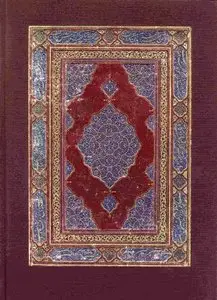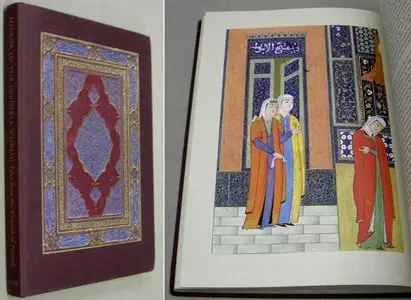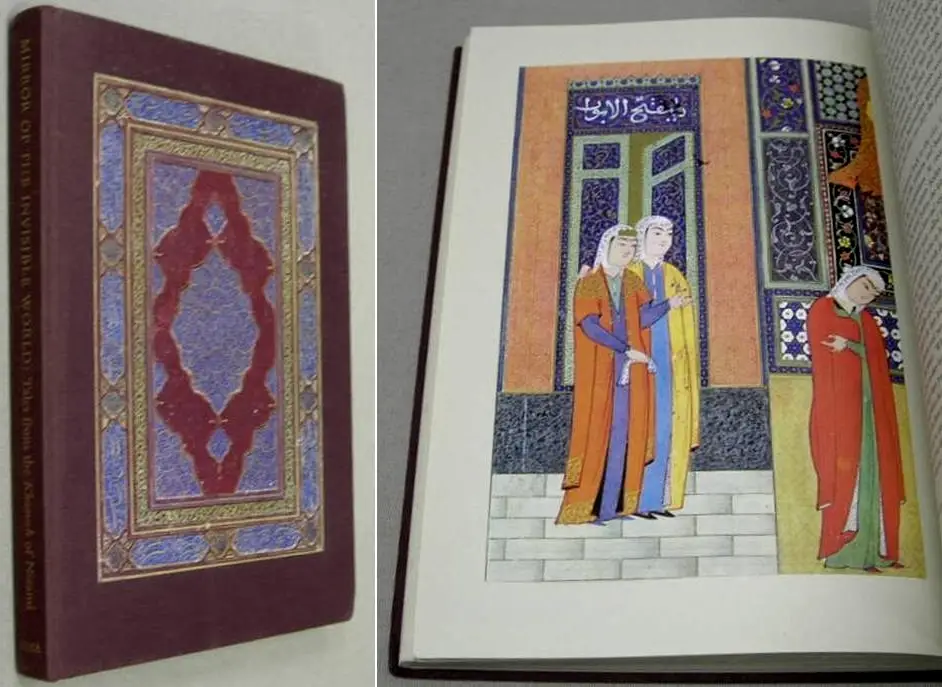Chelkowski, Peter J., "Mirror of the Invisible World: Tales from the Khamseh of Nizami"
Publisher: Metropolitan Museum of Art | 1975 | ISBN: 0870991426 | English | PDF | 117 pages | 17.09 Mb
Publisher: Metropolitan Museum of Art | 1975 | ISBN: 0870991426 | English | PDF | 117 pages | 17.09 Mb
Next to Ferdowsi's "Shah-nameh", the "Khamseh" or "Quintet" of Nizami offered the best opportunity for a wide-ranging series of illustrations to the Iranian miniaturist. Although these paintings lacked the typical iconographic formulas of the epic—heroic subjects such as enthronements, battles of whole armies, duels of the paladins, and encounters with demons and monsters—they depicted instead many scenes of great variety and romantic appeal. These have been rendered in innumerable manuscripts from the late fourteenth century up to the nineteenth century and have resulted in some of the most beloved motifs of Iranian pictorial arts. The scenes of Khosrow discovering Shirin bathing in a pool of water, of Shirin visiting Farhad as he carves his way through the mountain of Bisutun, of the unhappy sculptor carrying his queen and her horse on his shoulders, of Layla and her boy lover in school, of the poet Majnun in the desert surrounded by wild and tame animals, of Bahram Gur in the brilliantly colored pavilions of his seven beautiful princesses, are well known to all admirers of Iranian art in both the East and the West.
While the basic iconography of these scenes developed in the late fourteenth and in the fifteenth century, some of the finest versions date from the sixteenth century and their influence has been long-lasting. Just as Nizami's poems have served as models to many other poets in Iran, India, and Turkey, so have the illustrations of the original five poems been followed by the miniaturists illuminating later versions. Indeed, so popular are these subjects that they are found not only as illustrations of manuscripts but also as pictorial themes of tiles, chests, pen cases, textiles, and even carpets.
Aside from the better-known scenes, there are others which illustrate different episodes, frequently of a minor character. To understand these fully, it is necessary to be familiar with the varied subjects and themes of the poems, especially the major ones. Happily, this is now possible as a result of the investigations of Professor Peter J. Chelkowski, of New York University, who has written an English adaptation of the tales from Nizami's "Khamseh". He has provided, in addition, an introduction and commentaries on each story which not only present the historical background but also give us an insight into the rich imagination of the twelfth-century poet.
The publication of this volume coincides with the opening of the newly installed Islamic Galleries in The Metropolitan Museum of Art. The new galleries enable us to exhibit a very rich collection in a full and systematic fashion for the first time in many decades and provide us with a special opportunity to display the Museum's wealth of miniature painting. The Museum owns, among other Nizami manuscripts, one of the key manuscripts of the early fifteenth century, written and painted for one of the greatest of Iranian bibliophiles, the Timurid prince Baysonghor, residing in Herat, and one of the finest early sixteenth-century manuscripts painted in the same city. It is the miniatures from the latter, dated 1524/25 and one of the most sumptuous manuscripts ever produced in Persia, that illustrate this volume.
This new presentation of Nizami's stories, together with their splendid classical illustrations, enhanced by Professor Priscilla P. Soucek's art-historical introduction, should go far in recapturing the appeal that this art exerted for so many centuries on the Persian-speaking world.
Foreword
Preface and Acknowledgments
Introduction
The "Khamseh" of 1524/25
Khosrow and Shirin
Layla and Majnun
The Seven Princesses
Other important known manuscripts of the "Khamseh"
Preface and Acknowledgments
Introduction
The "Khamseh" of 1524/25
Khosrow and Shirin
Layla and Majnun
The Seven Princesses
Other important known manuscripts of the "Khamseh"
Peter J. Chelkowski, Department of Near Eastern Languages and Literatures, New York University.
Priscilla P. Soucek, Department of the History of Art, University of Michigan.
Richard Ettinghausen, Department of Islamic Art, The Metropolitan Museum of Art.
Priscilla P. Soucek, Department of the History of Art, University of Michigan.
Richard Ettinghausen, Department of Islamic Art, The Metropolitan Museum of Art.







